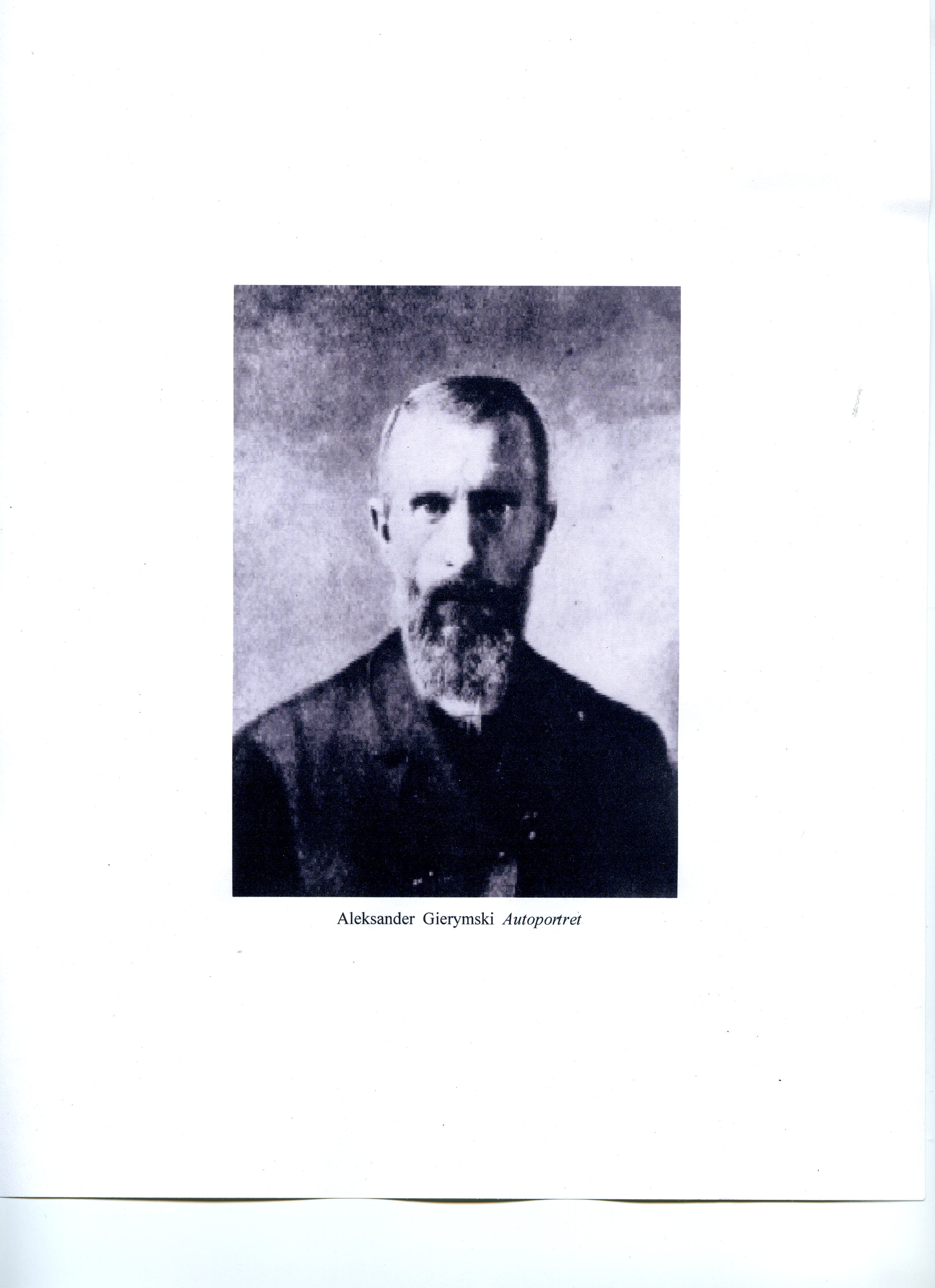Prominent Poles
Aleksander Gierymski, painter (born Ignacy Aleksander Gierymski)

Born: January 30, 1850, Warsaw , (Russian partition of Poland, presently Poland)
Died: between March 6 and March 8, 1901, Rome, Italy
Summary. As the Oxford Dictionary of Art puts it: ˝ He had an unstable temperament, led a wandering life, often in poverty, and at the time of his death (in an asylum) was virtually unknown to the art world. However, he is now considered one of the greatest of Polish painters.˝
Early days. Gierymski was born to a family of ˝intelligentsia˝ His older brother was a painter Maksymilian Gierymski. Gierymski graduated from a high school in Warsaw and then in 1867 studied at the Warsaw Drawing Class. During 1868-69 he studied at Munich's Akademie der Bildenden Kuenste and graduated obtaining a Gold Medal for his painting The Merchant from Venice. In 1969 he attended together with his brother the workshop of Franz Adam. While in Munich he contributed illustrations to Polish (among others Klosy and Tygodnik Ilustrowany), German and Austrian magazines. In 1871 he traveled with his brother to Italy (Venice, Verona). Contact with Italian Renaissance paintings considerably affected his early works.
Career. 1873-78. After accompanying his dying brother to various spa towns and other locations, he settled in Rome in mid-1874. In 1874 he painted there his first known paintings: Roman Tavernand A Game of Mora. Both were exhibited in Warsaw's Zacheta and both were positively received. His main painting of this period was In the Altan.
1879-88. During this time Gierymski created the best of his work. Staying in Warsaw he became close to Witkiewicz and Sygietynski and worked with them in the editorial office of a weekly Wedrowiec. His paintings like Pomaranczarka, Brama na Starym Miescie, Przystan; Na Solcu, Trabki, Piaskarze have themes borrowed from the poor districts of Warsaw. Gierymski was however underestimated by his countrymen. This and lack of ability to survive economically caused his departure from Warsaw in 1888 and living mainly in Germany and in France.
1889-1901. In new surroundings he changed the character of his paintings: he painted landscapes (Fragment Rotenburga ) and nocturnal cityscapes like Opera paryska w nocy, Zmierzch nad Sekwana;. In the period 1893-1895 he stayed briefly in Cracow trying to get the Chair of Painting in the Academy of Fine Arts and during this time he painted Trumna chlopska. Last years of his life he spent in Italy and painted among others Wnetrze bazyliki San Marco w Wenecji and Piazza del Popolo w Rzymie. His life ended in an asylum in Rome.
Awards. 1890 Gold medal of the II class on the international art exhibition in Munich (one of his painting was bought by the famous museum Neue Pinakotek in Munich). Gierymski started to be fully appreciated only in the 20th century.
The most important works. Zydowka z cytrynami (1881); W altanie (1882); Powisle (1883); SwietoTrabek(1890); Wieczor nad Sekwana; (1892-93); Trumna chlopska (1894-95); Jezioro o zachodzie slonca (1900); Pinie przy Villa Borghese w Rzymie (1900); Morze (1901).
Source:
This article uses, among others, material from the Wikipedia article "Aleksander Gierymski" licensed under the GNU Free Documentation License. :
Wikipedia (in Polish)
Other sources:
Culture.pl (in Polish; Ewa Micke-Broniarek
Muzeum Narodowe w Warszawie)
The Oxford Dictionary
Artyzm(includes reproductions of 20 Gierymski's's paintings)
Pinakoteka (includes reproductions of 40 paintings; in Polish)
Return to home page:
Prominent Poles
